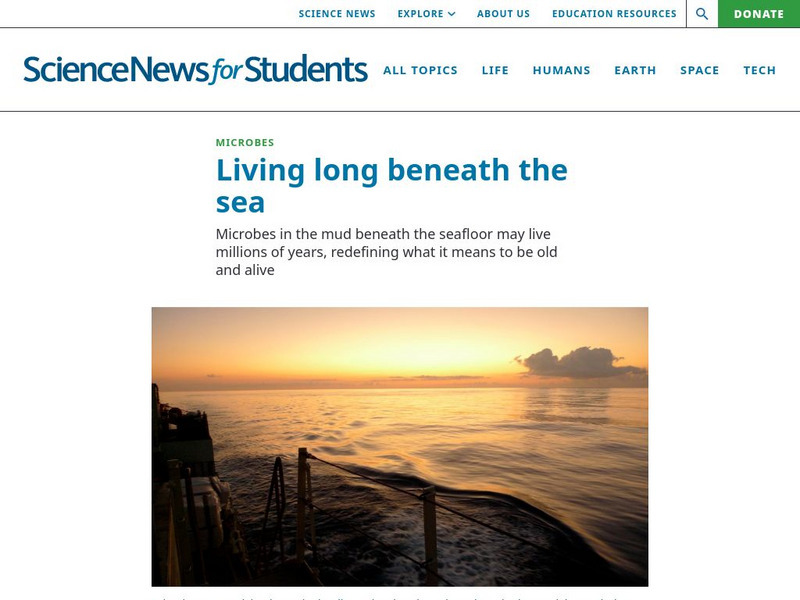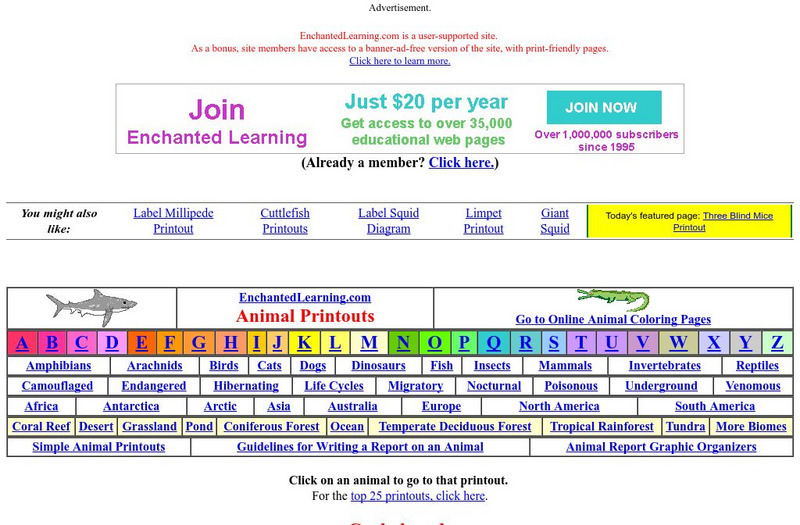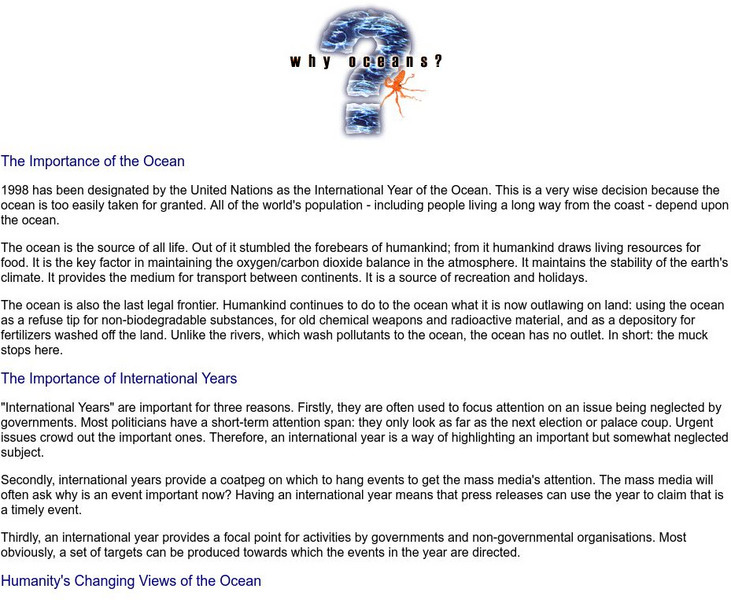Curated OER
Word Search: Common Seashore Plants
I really like these colorful word searches put out by The Waterford Press. Learners view 18 beautiful and accurate drawings of common seashore plants, and then must find them in a word search. An answer key is provided.
Curated OER
Word Search: Common Seashells
Here is a wordsearch on common seashells. There are 25 shell words that have to be found in the search. Each one has a colorful and accurate picture on the worksheet. An answer key is included.
Curated OER
Common Marine Mammals
Common marine mammals are found in this word search. Mammals include; sea lion, bottlenose dolphin, white-sided dolphin and more. The extremely colorful and accurate drawings of each of the animals make this more than just your average...
Curated OER
Magazine Project
Groups of students create magazines that contain stories and images of one aspect of the ocean, and ocean life. The expectations for the final products are quite high, so this lesson will require some effort to properly implement. A...
Curated OER
Ocean Commotion Activity - Dioramas
Groups make a model of an Ocean Commotion exhibit based on what they saw during the fieldtrip. These dioramas can be used as an informal assessment of student knowledge acquired at Ocean Commotion.
Curated OER
Ocean Life Poetry: Limericks & Cinquain Poems
Young oceanographers conduct independent online research to learn about ocean life, explore limerick and cinquain poem structure and syllabication, and produce poetry that conveys the information they found. Links don't work, but it's...
Curated OER
The Ocean
Plant and animal life of the ocean is the focus of this science lesson plan. Young scientists sort a variety of seashells and explore why many sea animals have shells. They examine the shells, write journal entries highlighting the...
Curated OER
Ocean Life
Third graders explore and research ocean life. In this ocean life cross curriculum biology and literacy lesson, 3rd graders compare and contrast Sponge Bob with real ocean life, then examine and describe dried ocean life creatures....
Curated OER
Something Fishy Going On
Students create a video animation of how Swimmy gathered his fish friends together to form a great big fish that would frighten the predator tuna away. In art class each child create a small red fish which gets displayed in the ocean...
Curated OER
Ocean Life
Students explore the topics of ocean water salinity, ocean life zones, marine life classification, and ocean food chains. They observe demonstrations, conduct experiments, complete quizzes and handouts, and analyze key vocabulary.
Curated OER
What's In The Bottom of the Ocean?
Second graders explore the ocean. In this science lesson, 2nd graders define vocabulary and color pictures of animals that live in the ocean. Students complete a word search about ocean life.
Curated OER
Learning About Aquatic Life
Third graders research animal and plant life in the ocean. For this science lesson, 3rd graders make a drawing of lifeforms found in the ocean and write about one thing they learned about ocean lifeforms.
Society for Science and the Public
Science News for Students: Beneath the Sea
What does it mean to be alive? Scientists are now revisiting this question as they discover previously unknown microorganisms at the bottom of the ocean.
Enchanted Learning
Enchanted Learning: Cephalopods
This site provides links to elementary information about cephalopods. Students and teachers will find links to the blue ring octopus, the giant squid, the cuttlefish, octopus and more.
Other
Ocearch Tracker
A Track Sharker tool by Marine Research Group OCEARCH lets you track tagged sharks -- who all have names, by the way -- as they travel all over the world. You can even zoom in on a specific location to see which sharks are hanging out...
Australian Broadcasting Corporation
Australian Broadcasting Corporation: Why Oceans?
This site, which is provided for by the Australian Broadcasting Corporation, gives an article on the importance of the ocean. Everyone on earth depends upon the oceans. Learn why oceans are important and what Australia is doing to help...
ClassFlow
Class Flow: Ocean Life
[Free Registration/Login Required] This flipchart is about the different ocean zones: sunlight zone, twilight zone, and midnight zone. It contains video about ocean life in the different zones.
HotChalk
Hot Chalk: Lesson Plans Page: Ocean Unit Introduction
This lesson will introduce young students to oceans by looking at the animals, plants and water temperatures for different oceans.



















